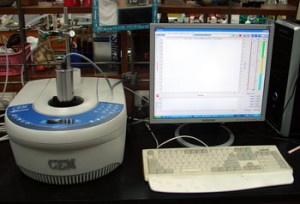Microwaves have been used to promote organic reactions since the 1980s and they can lead to higher yields and shorter reaction times than conventional heating, but why? Conventional wisdom says that it’s the heat that promotes the reactions, but new research shows that the waves could be interacting with the molecules directly.
Gregory Dudley and colleagues from Florida State University, Tallahassee, in the US, discovered a microwave effect occurring during a Friedel-Crafts benzylation reaction in a microwave. The microwave-absorbing polar reactant – a pyridinium – reacted in a non-polar and largely non-microwave-absorbing solvent – toluene. Previously, a non-polar reaction system had to be doped with ionic liquids, which converted the microwaves to heat. ‘Polar molecules interact more strongly with microwaves than non-polar molecules,’ explains Dudley. ‘So we tried to design a system in which only the reaction substrate would interact with the incident radiation energy.’
The team found that the microwave irradiation induces reactivity levels that can’t be duplicated by conventional heating, without reaching the temperature required in conventional heating. ‘It’s hard to speculate what exactly is going on,’ says Dudley. ‘Our focus was to identify an effect.’ Dudley adds that there is still much to learn about the differences between activating reactions with microwaves and conventional heating.

Defying conventional wisdom, new research shows it could be microwaves that promote microwave-assisted reactions, not heat
Read the full story in Chemistry World
Link to journal article
On the rational design of microwave-actuated organic reactions
Michael R. Rosana , Yuchuan Tao , Albert E. Stiegman and Gregory B. Dudley
Chem. Sci., 2012, Advance Article
DOI: 10.1039/C2SC01003H










